Are you a chef, restaurant owner, or a foodie at heart who loves to cook, bake, and explore new flavors and cuisines? Do you dream of sharing your passion for food with the world through your own blog? If so, you’re in the right place!
By starting a website, you can create your own mark on the internet that will give you the opportunity to influence a whole new audience.
You could also make a little money, even if you’re asleep or hanging out with friends!
In this article, we’re going to talk about the benefits and perks of being a food influencer. Then we’ll explain the steps on how to create a food blog.
After that, we’ll shed some light on some of the important aspects, from promoting your blog to the ways you can make money from it.
We’ll also answer some frequently asked questions before we wrap up.
By the end of this tutorial, you’ll be able to create a food blog like this.
- Why create a food blog?
- TLDR of how to create a food blog in 2023
- How to start a food blog with WordPress (step by step)
- Step 1: Research the food niche and your target audience
- Step 2: Get a domain name to make your blog a brand
- Step 3: Set up web hosting for your food blog
- Step 4: Set up WordPress (The best Blogging Platform)
- Step 5: Choose a theme to design your food website
- Step 6: Installing Starter Templates
- Step 7: Install a food blog template
- How to promote your food blog
- How to make money from your food blog
- How much can you earn with a food blog?
- FAQs on how to start a cooking blog
- Over to you
Why create a food blog?
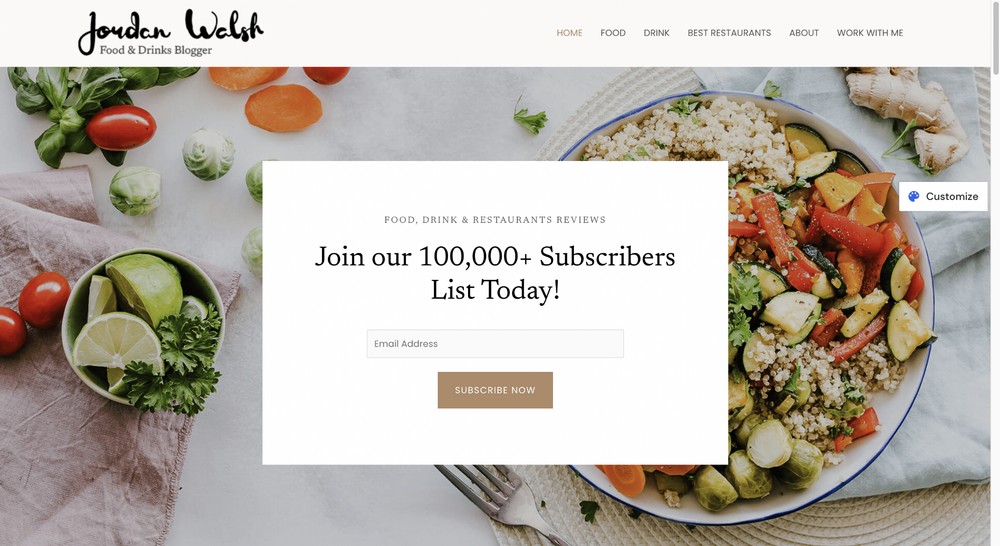
There are many reasons why you might want to create a food blog.
Some people start a food blog as a way to share their passion for cooking and food with others. They may enjoy experimenting with new recipes and sharing the results with their readers.
Others may want to use their food blog as a way to document their culinary adventures, whether they are trying new restaurants or traveling to new places and trying local cuisines.
Food blogging can also be a creative outlet for those who enjoy writing, photography, and design.
Many food bloggers enjoy the process of styling and photographing their dishes and creating visually appealing content for their readers.
In addition to the personal satisfaction that comes from creating and sharing content, food blogging can also be a way to build a community of like-minded individuals.
Many food bloggers have developed loyal followings of readers who enjoy their recipes, stories, and insights.
Finally, food blogging can be a way to make money.
Some food bloggers monetize their blogs through advertising, sponsored content and selling products such as cookbooks or kitchen gadgets.
TLDR of how to create a food blog in 2023
It’s very straightforward to create a food blog. In just 6 simple steps you could be sharing your passion with the world.
- Step 1: Research the food niche and your target audience.
- Step 2: Get a domain name and web hosting.
- Step 3: Set up web hosting for your food blog.
- Step 4: Set up WordPress (The best blogging platform).
- Step 5: Choose a theme to design your food website.
- Step 6: Install Starter Templates to get a ready-made website design.
How to start a food blog with WordPress (step by step)
Whether you’re a seasoned blogger or new to the game, this guide will help you launch a successful food blog that reflects your unique voice and perspective.
To make it happen, make sure you follow these steps:
Step 1: Research the food niche and your target audience
First, you need to research the food niche and the type of audience you want to work for.

Are you going to focus on a specific type of cuisine, such as Italian or vegan? Are you going to cover a variety of food-related topics, such as cooking techniques, restaurant reviews, or food science?
Having a clear focus will help you determine your target audience.
Here are a few of the most popular food niches that you might be interested in:
- Culinary-specific blogs such as Italian, French, Greek, Indian, or Chinese cuisine
- Trending diet blogs (gluten-free, paleo, keto, low-carb, vegetarian or vegan blogs
- Cookbook review blogs
- Food and beverage photography blogs
- Food and travel influencer blogs
- Food and beverage blogs
We wouldn’t recommend starting with all of them right away.
We recommend spending some time narrowing it down to a single niche. In this case, you might go for the one in which you’re already skilled or are interested in.
You can always expand later if you want to.
Ask yourself:
- If you like the Paleo diet, share your unique and mesmerizing recipe or review other restaurants by sharing their recipe photos and videos.
- Are you going to focus on a specific type of cuisine, such as Italian or vegan?
- Are you going to cover a variety of food-related topics, such as cooking techniques, restaurant reviews, or food science?
Focusing on the niche you’re already interested in or passionate about will help you find and connect with your like-minded audience.
Once you pick up your niche, it’s time to study the demographics of your target audience.
Answer questions such as:
- Who are you trying to reach with your food blog?
- Are they primarily home cooks or food enthusiasts?
- Are they male or female, and what is their age range?
Knowing your target demographics can help you tailor your content to better appeal to them.
Finally, use keyword research tools and social media to see what topics are currently popular in the food niche.
You can also keep an eye on food-related news and events to see what’s trending.
Step 2: Get a domain name to make your blog a brand

A domain name is the unique address of your website. You use it to identify your blog and distinguish it from others.
It can help you create a professional image for your website and make it easier for your users to remember it and return.
To get a domain name for your blog, you’ll need to decide on the name you want. This should be a unique and memorable name that reflects the content and focus of your blog.
You’ll probably spend a lot of time coming up with a good domain name and even longer trying to find one that hasn’t already been taken!
Check the availability of the domain name as soon as you have one.
You can do this by visiting a domain name registrar, such as Google Domains or Namecheap, and entering the name you want in the search bar.
If the domain name is available, you should buy it as quickly as you can to stop anyone else taking it.
If the domain name is already taken, you may need to come up with a different name or use a different suffix, such as .net or .info, to make it unique.
Step 3: Set up web hosting for your food blog

Web hosting is a service that allows you to post your website or web page onto the internet.
This is important because it allows you to publish your website or web pages on the internet, making it accessible to people all over the world.
Different types of web hosting services are available, including shared hosting, dedicated hosting, and virtual private server (VPS) hosting.
Each type of hosting has its own set of features and benefits. The right type of hosting for your website will depend on your specific needs and requirements.
You’ll find a wide variety of hosting providers to choose from, each with its own set of features and pricing plans.
Some popular options include Cloudways, Hostinger, Kinsta, GreenGeeks and SiteGround.
Again, most hosting providers offer different plans for different needs, so be sure to choose one that meets the requirements of your food blog.
Consider factors such as the amount of storage space, bandwidth, and customer support each provider offers when making your decision.
However, we recommend Cloudways. Why?
Well, if you purchase hosting from them, you’ll get the opportunity to use Astra Pro for free, which comes with a host of amazing benefits.
Step 4: Set up WordPress (The best Blogging Platform)
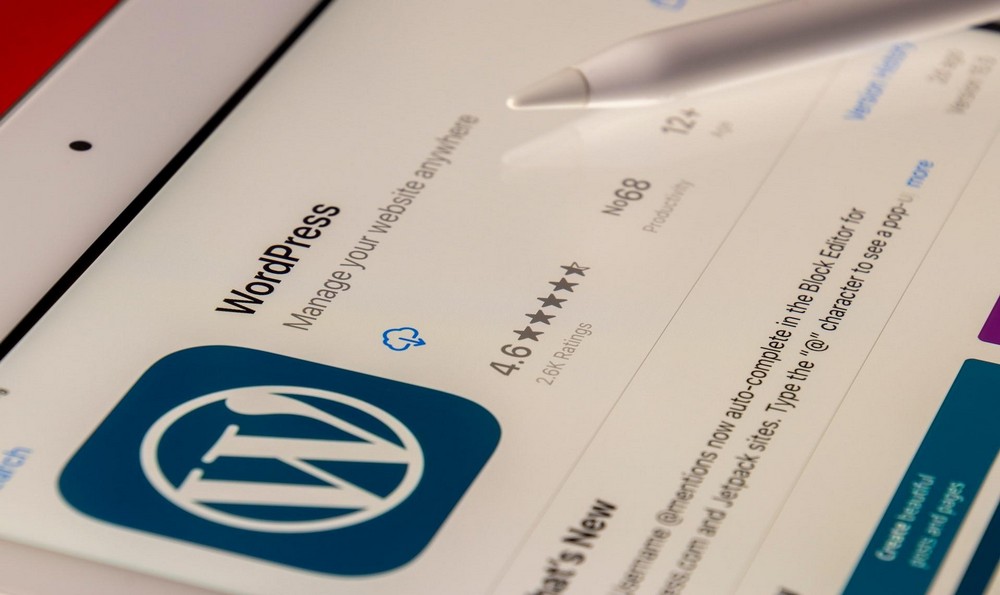
WordPress is a popular content management system (CMS) that is commonly used for creating blogs and websites. It’s easy to use and offers a wide range of customization options.
To install WordPress, you’ll need to follow the instructions provided by your web hosting provider.
Luckily, most web-hosting providers like Cloudways will install WordPress for you.
Want to install WordPress yourself? This tutorial will help to set up WordPress!
Step 5: Choose a theme to design your food website

Good design is important for a food blog because it makes it more appealing and enjoyable for visitors to use.
A well-designed food blog will be visually appealing, with high-quality photos and a cohesive, attractive layout.
It will also be easy to navigate, with a clear hierarchy of information and a logical structure that allows visitors to find what they’re looking for quickly and easily.
In addition to improving the user experience, good design can also help to increase the credibility and authority of the website.
A professionally designed food blog is more likely to be taken seriously and trusted by visitors, which can help to build a loyal audience and drive traffic.
Good design can also make it easier for visitors to share content from the website on social media or through other channels, which can help to increase the website’s reach and visibility.
No matter which paid or free theme you choose, it’s important to make the website visually appealing and easy to navigate with high-quality photos and clear, concise writing.
We recommend Astra as it is fast, responsive, SEO-friendly, and highly customizable with page builders. It’s also our own theme!
The best part is that you can install its readymade Starter Templates library to create your food blog in just a few minutes.
Starter Templates also work with other themes so feel free to use any other theme if you want.
To install Astra, navigate to the WordPress admin dashboard and go to Appearance > Themes.
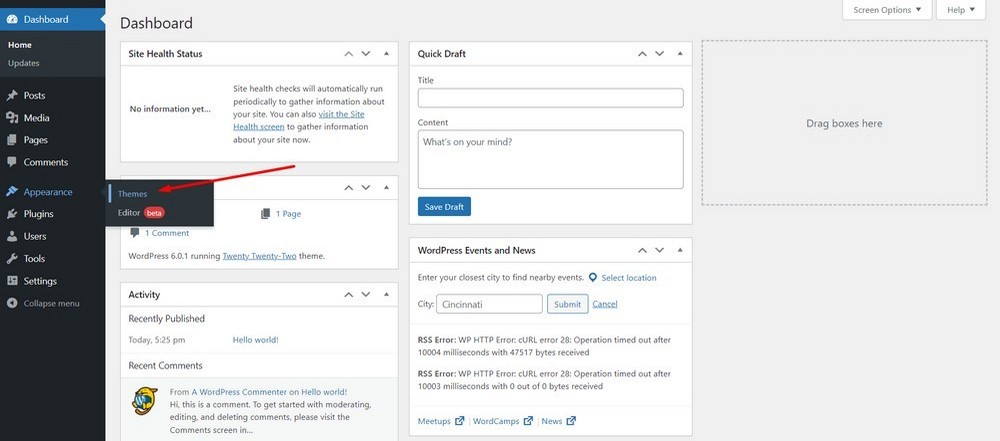
Now, click on the Add New option.
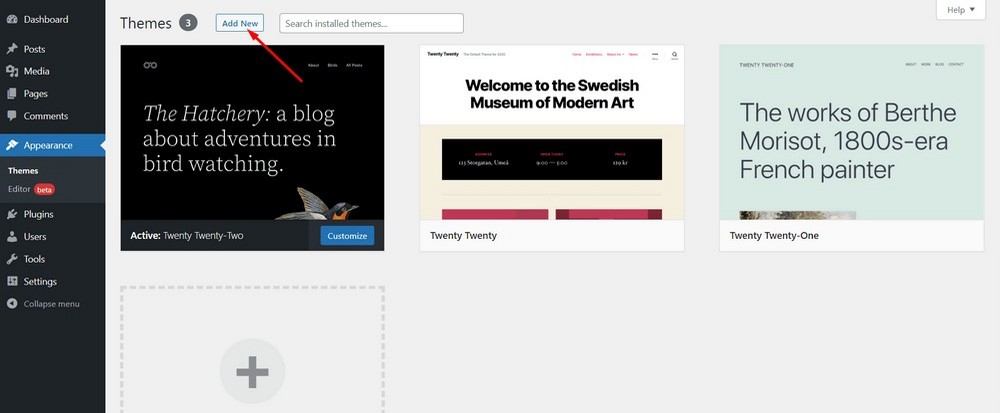
Search with the keyword “Astra”.
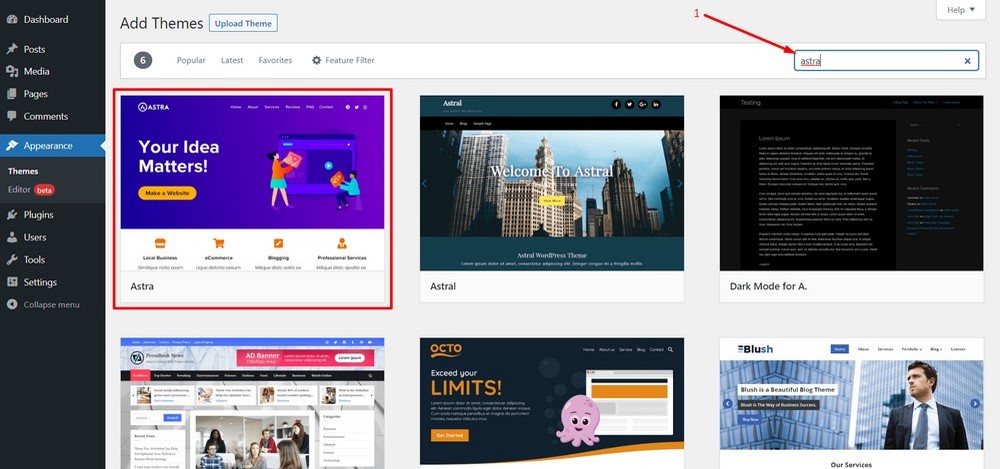
Hit the Install button.
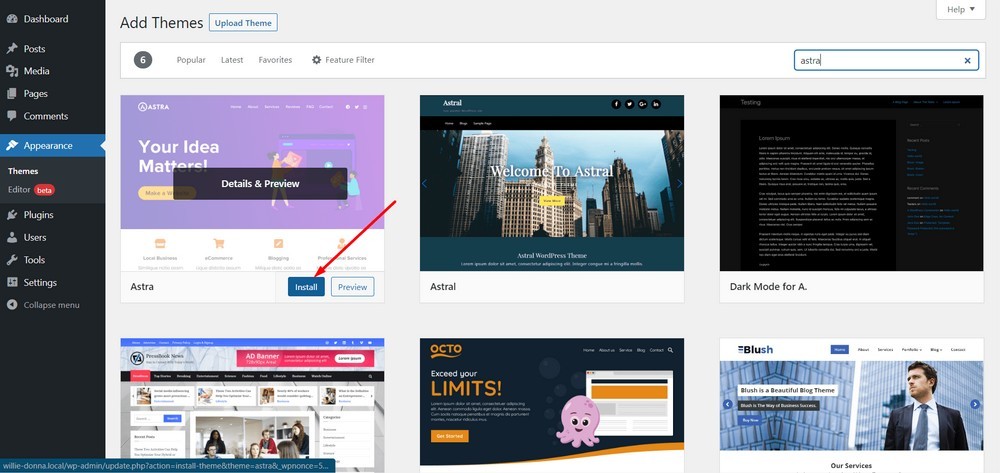
Activate the theme.
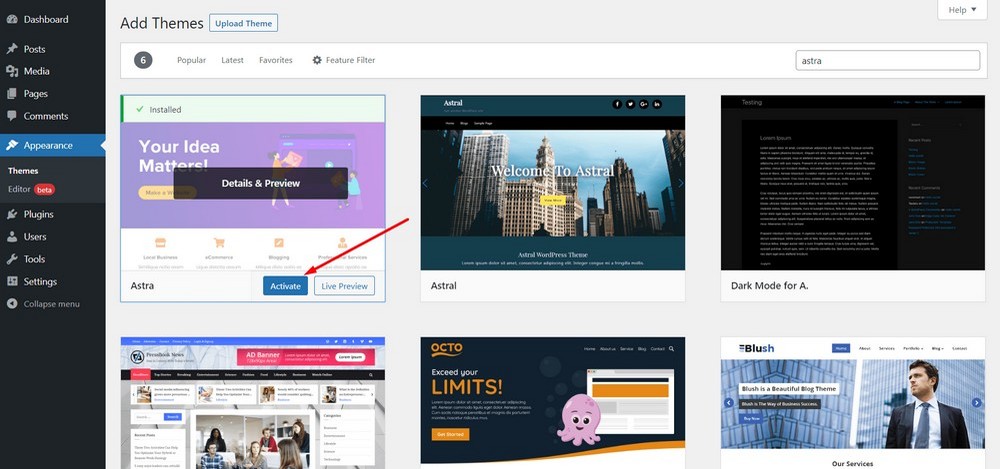
Congrats! You are done installing the Astra theme!
Step 6: Installing Starter Templates
Now, let’s install Starter Templates to create your food blog. A template provides the look and feel of your blog so it’s an essential ingredient!
It offers:
- Drag and drop-based editing experience.
- A wide variety of free and premium food blog templates.
- Provides best performance with the Astra theme.
- Compatibility with any other theme.
- Different templates for different page builders.
The food blogger template is a premium option but there are plenty of free templates to choose from if you prefer.
To use it, and get access to several other premium templates, you’ll need to purchase one of our premium plans.
Select a plan, complete the purchase and you’ll be able to download the files to your computer as ZIP files.
Then, navigate to the WordPress admin dashboard and head to Plugins > Add New.
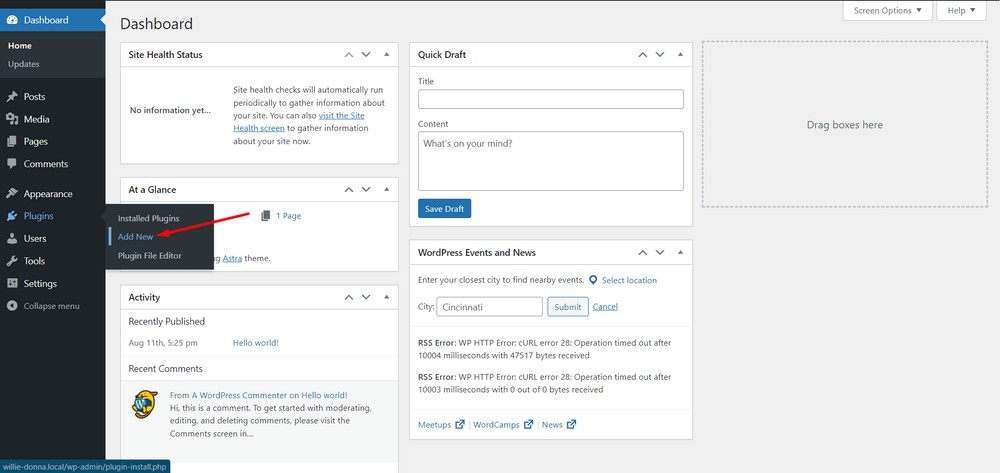
Choose the Upload Plugin option.
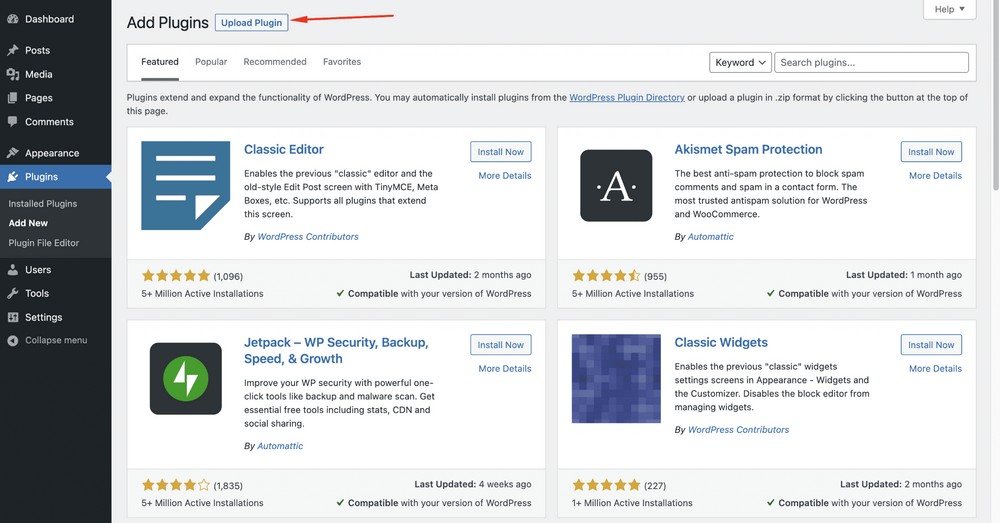
Now, select the Choose File button.
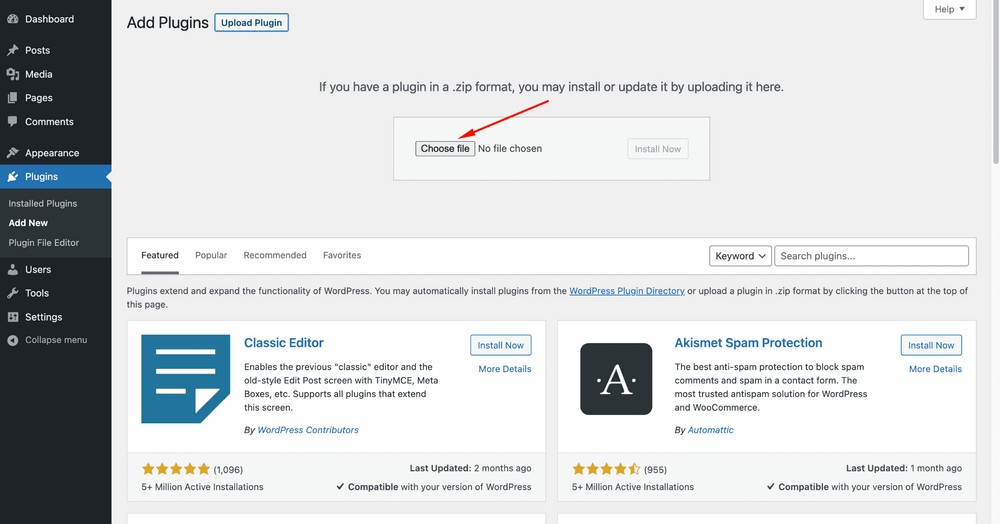
After selecting the Astra Premium Sites (Starter Templates) ZIP file, hit the Install Now button.
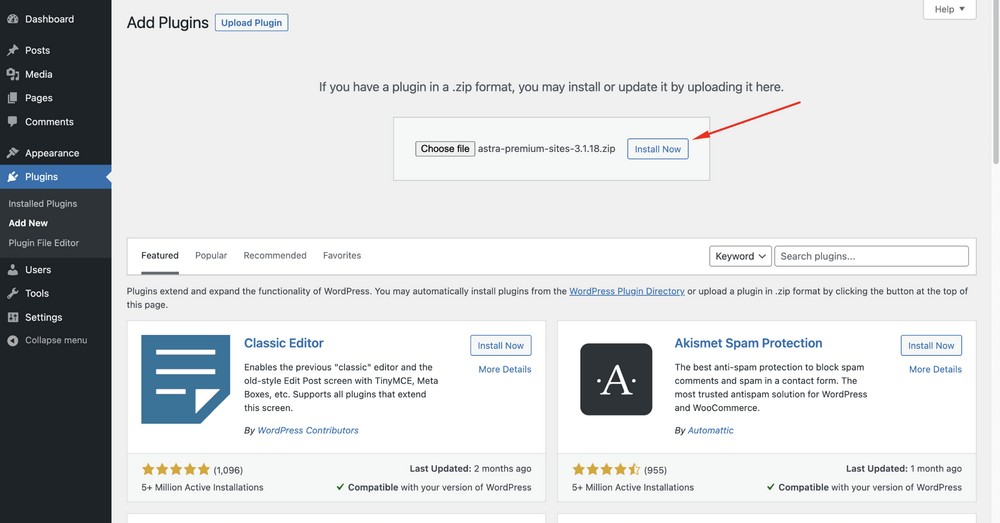
Click on the Activate Plugin button.
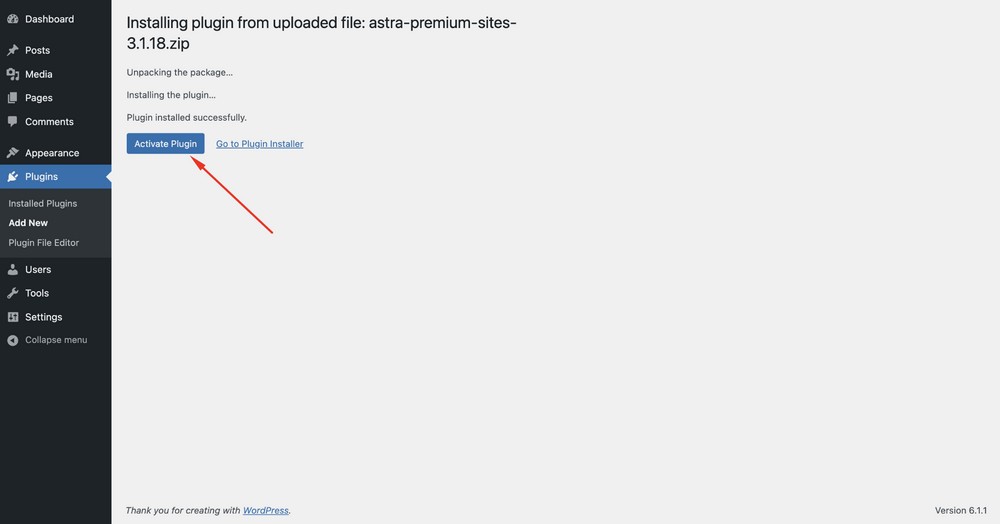
Select the Activate option at the top of the page.
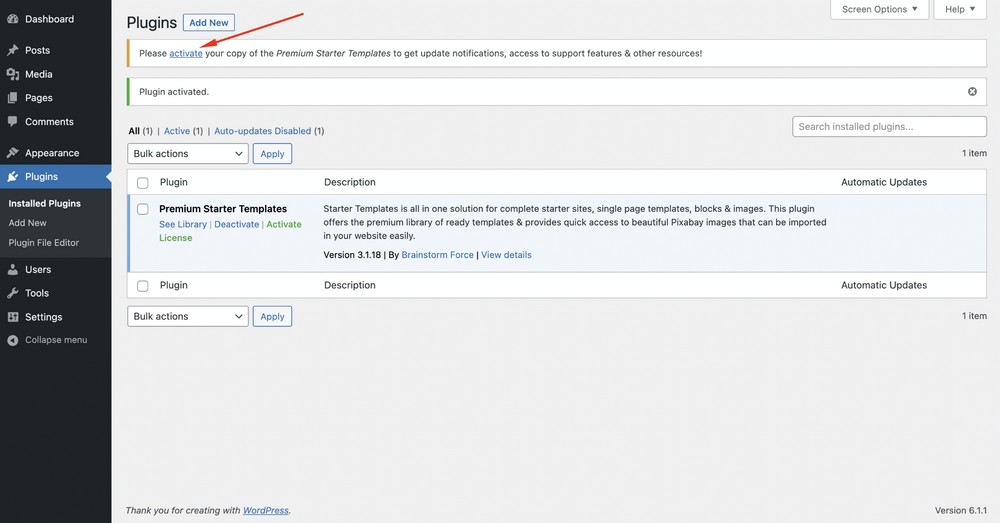
Enter the license key from your new Astra account and tap the Activate License button.
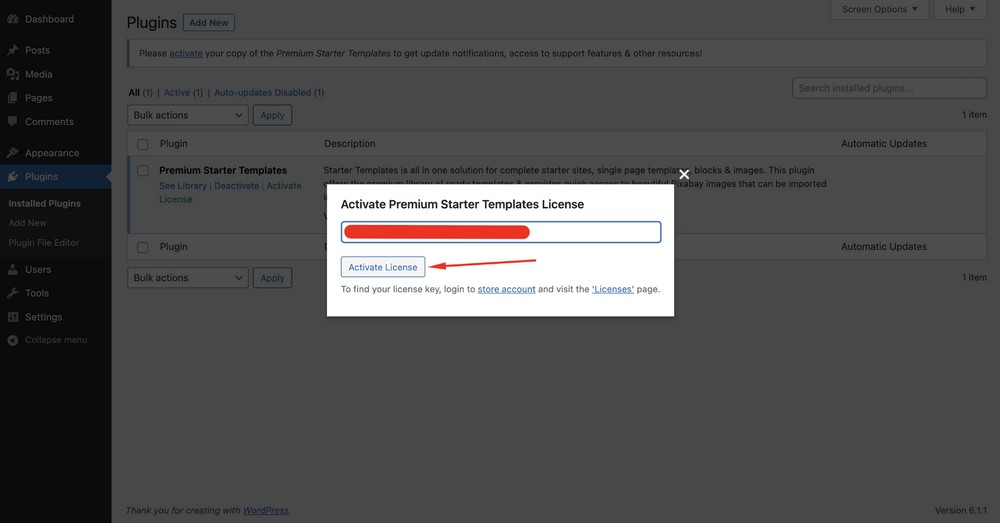
Now, you’ll see a success message. Exit the popup using the cross icon.
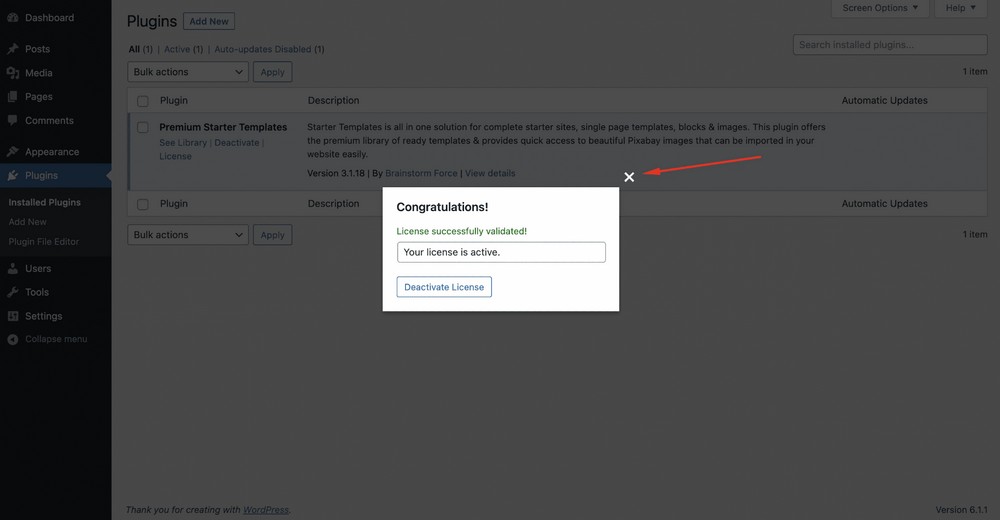
Step 7: Install a food blog template
Navigate to the WordPress admin dashboard and go to Appearance > Starter Templates.
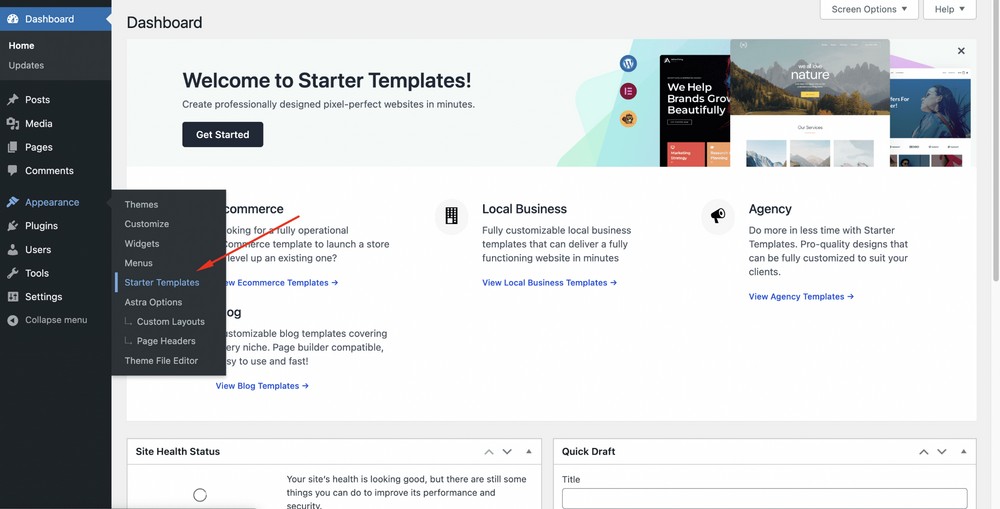
Now, hit the “Build Your Website Now” button.
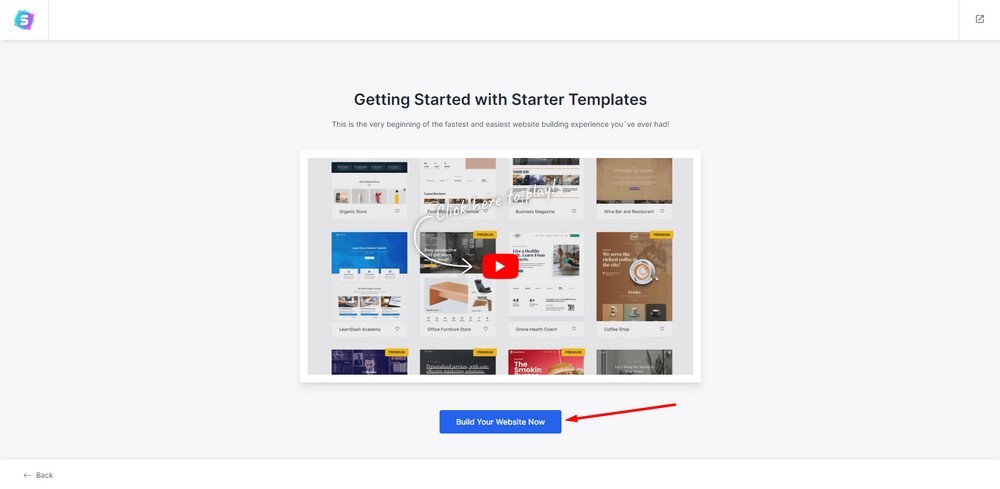
Choose a page builder that you feel comfortable with. We’re going to use Elementor in this tutorial.
You’ll find different templates for different page builders. Feel free to choose other page builders at any time to find a suitable template for you.
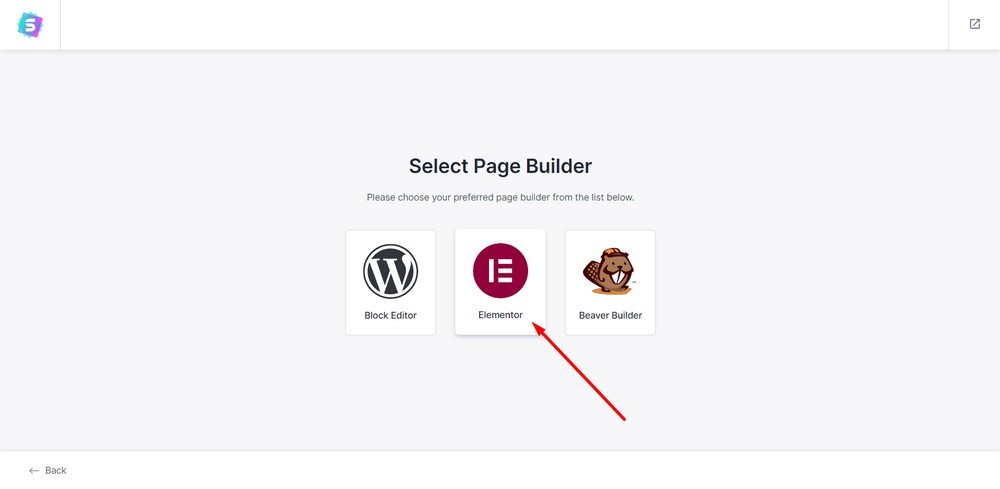
Now, search with the keyword ‘food’ in the search bar.
You’ll find a series of templates related to the food niche.
Choose one that resonates with your preference. We’re selecting the first one, “Food Blogger & Influencer”.
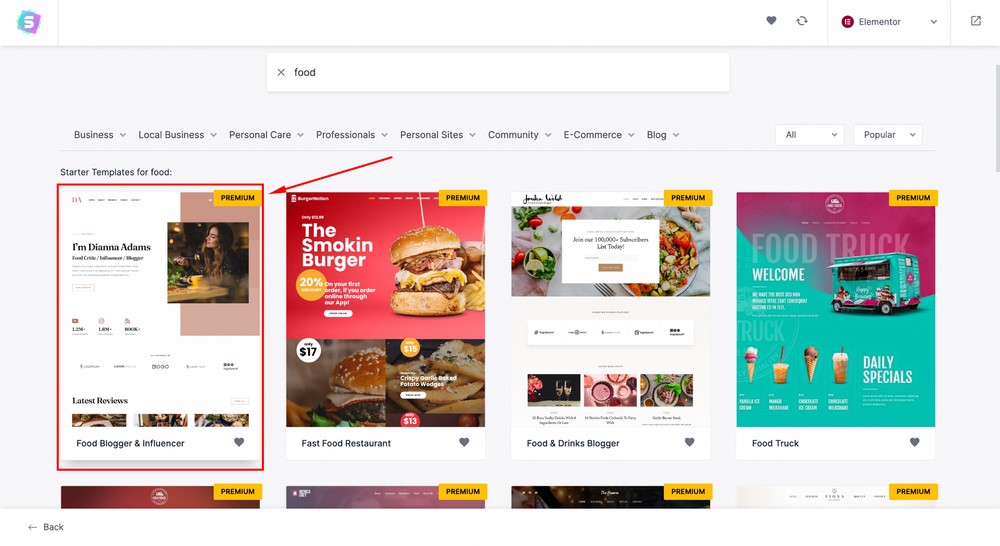
At this stage, you can upload your website logo and play around with its size. You can also upload it later.
For now, select the Skip & Continue button.
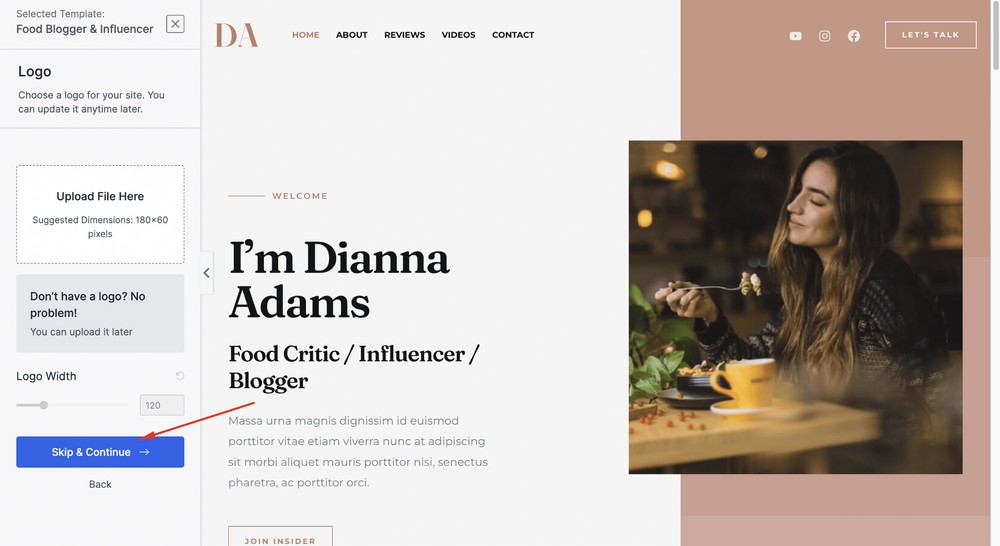
Next, you will find options to change the default color and font family of the template. Hit Continue to proceed.
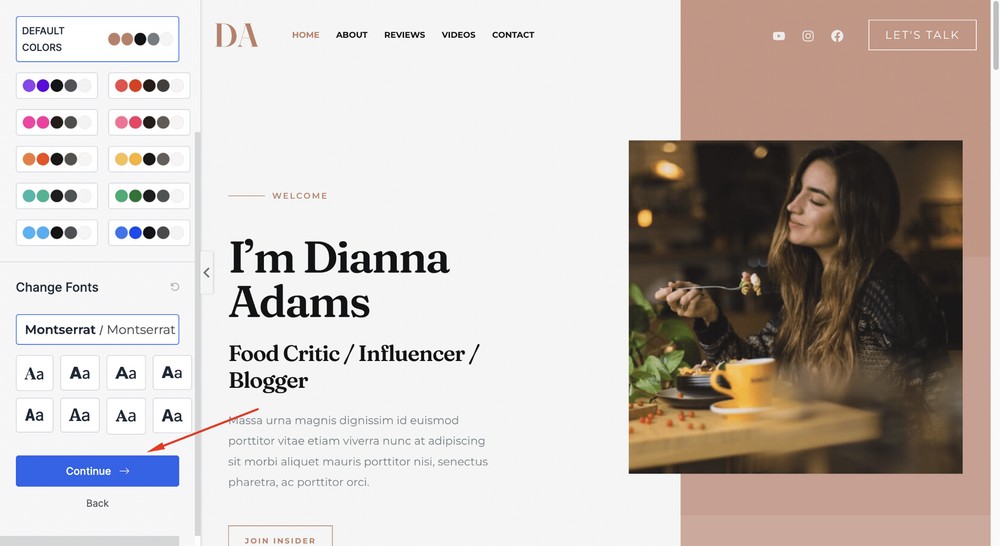
Now, you can enter your name and email address and opt for the newsletter. Hit Submit & Build My Website to finalize the process.
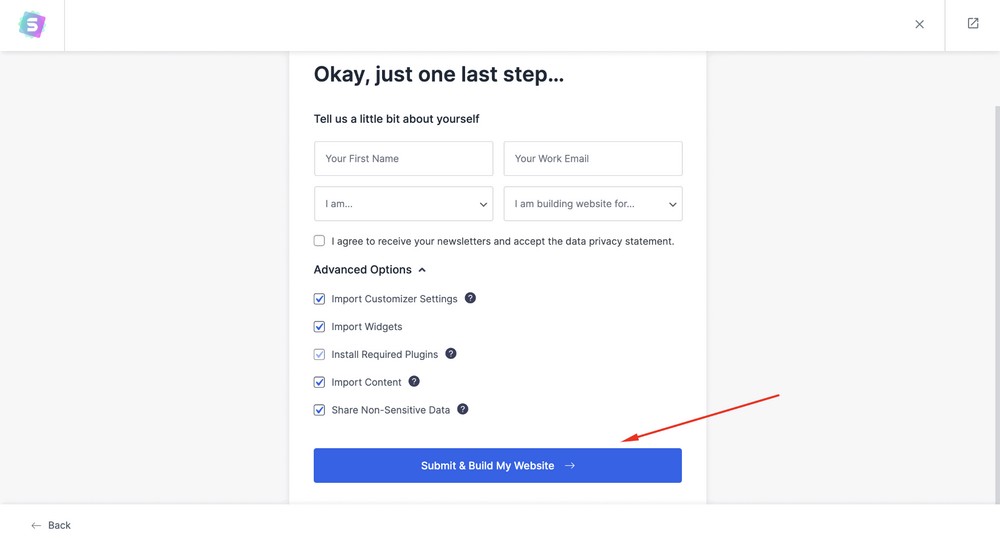
Nice work. You’ve successfully built your website like a pro!
Click on the View Your Website button to see how your website looks on the front end.
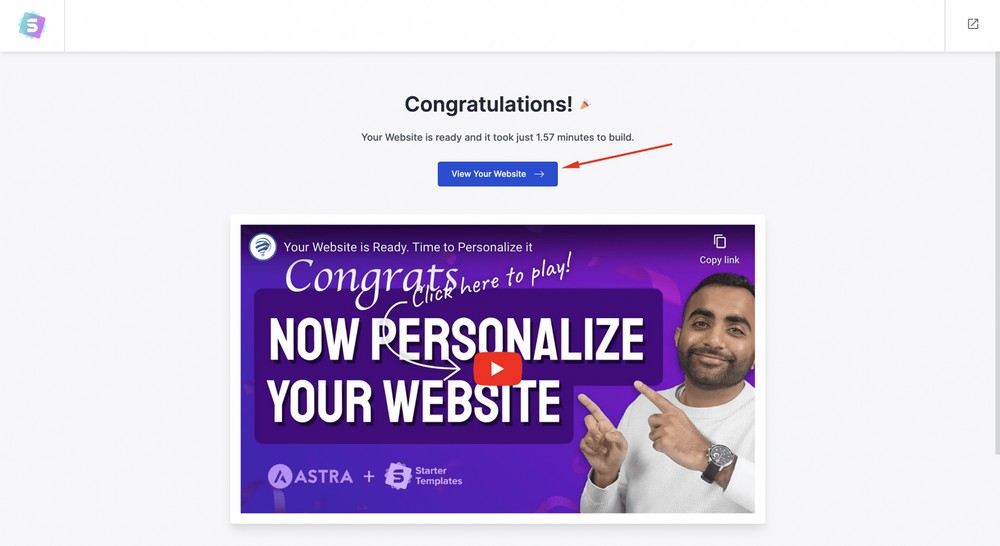
Here’s what your website should look like.
How to promote your food blog

Here are some strategies you can use to promote your food blog:
- Create social media channels: Set up a Facebook page, Instagram account, and Twitter account for your blog and start posting regular updates, photos, and links to your blog content. Make sure to interact with your followers and respond to comments and messages.
- Use an SEO strategy: Optimize your blog for search engines by including relevant keywords in your titles, headings, and content. This will help your blog rank higher in search results, making it easier for people to find your blog.
- Start an email newsletter: Use a service like Mailchimp to create an email newsletter and send updates to your subscribers whenever you publish a new post.
- Collaborate with other bloggers: Reach out to other food bloggers and see if they would be interested in collaborating with you on a post or sharing your content on their social media channels.
- Partner with restaurants, dine-in apps and food delivery services: Consider partnering with local restaurants, dine-in apps, and food delivery services to promote your blog. You could write reviews of their products and services or offer discounts to your readers.
- Use paid advertising: Consider using paid advertising to promote your blog. You could use platforms like Facebook Ads or Google AdWords to reach a larger audience.
- Attend food-related events: Attend food festivals, cooking demonstrations and other food-related events in your area and use them as an opportunity to promote your blog.
- Be active in online food communities: Join online food communities and forums and participate in discussions related to your blog. This can help you connect with potential readers and promote.
Promoting your food blog includes, but is not limited to, the above-mentioned strategies. Always, look for new ways to run circles around your competitors.
How to make money from your food blog
There are several ways you can make money from your food blog:
- Affiliate marketing: You can earn money by promoting products or services on your blog and earning a commission for every sale or referral made through your unique affiliate link. For example, if you write a review of a kitchen appliance and include an affiliate link to purchase it on Amazon, you will earn a commission if someone clicks on the link and makes a purchase.
- Displaying ads: You can make money by displaying ads on your blog. There are several advertising networks you can join, such as Google AdSense, which will automatically display relevant ads on your blog and pay you for every click.
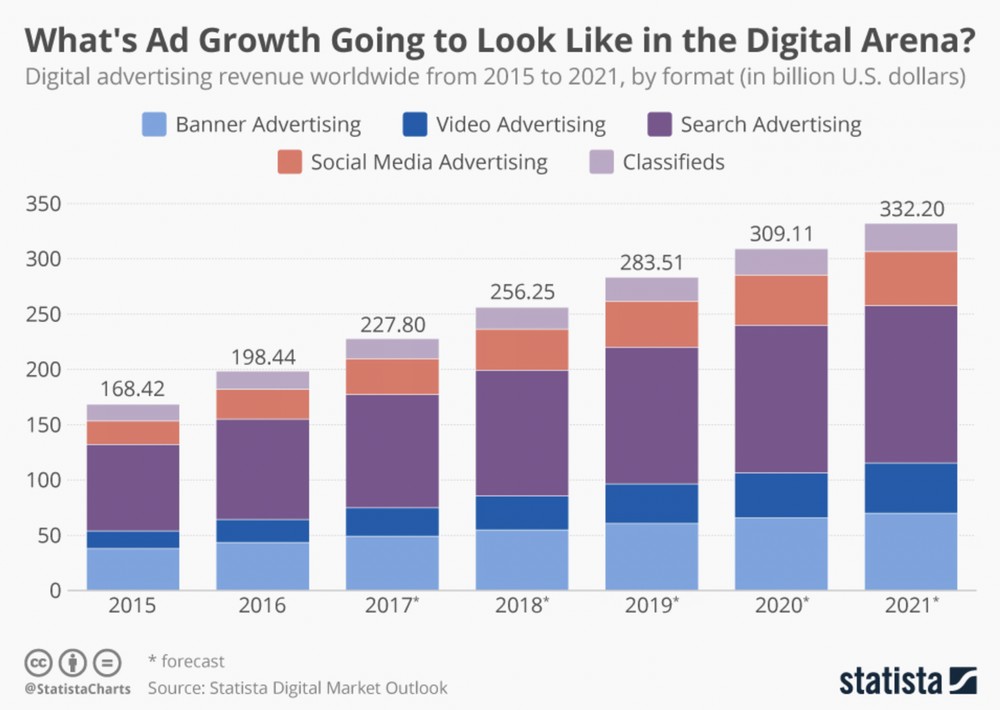
Source: Statista.
- Sponsored posts: You can earn money by writing sponsored posts for companies or brands. In a sponsored post, you write about a product or service in exchange for payment. It’s important to disclose that the post is sponsored so that your readers know that you are being paid to write about the product or service.
- Selling products: If you have a unique product or service related to food, such as a cookbook or a meal delivery service, you can sell it directly on your blog.
- Offering consulting or coaching services: If you have expertise in a specific area of food, such as recipe development or food photography, you can offer consulting or coaching services to other food bloggers or businesses.
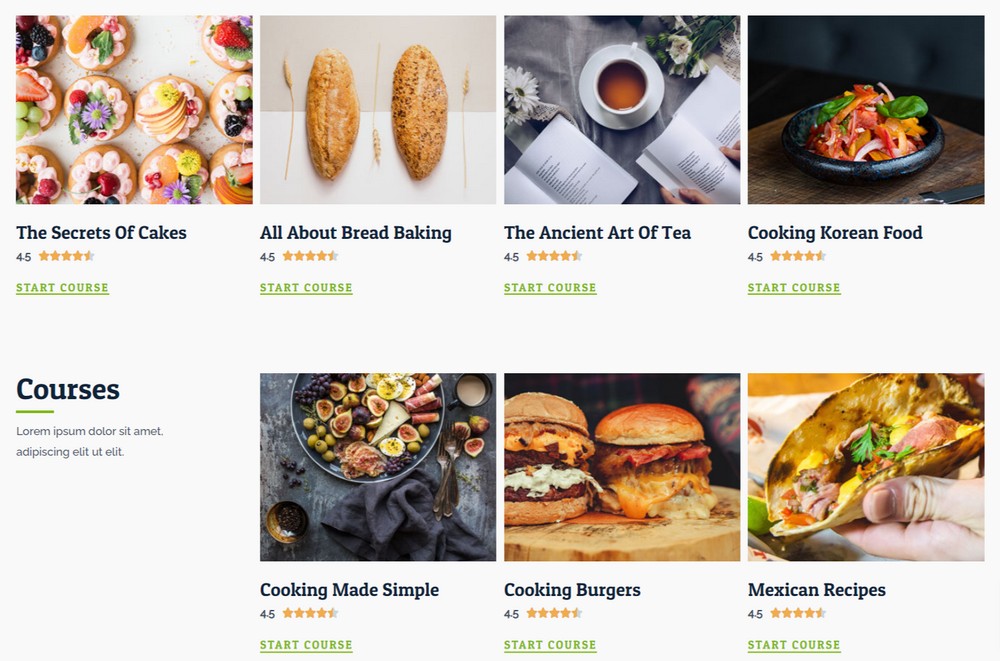
- Collaborating with brands / being a brand ambassador: You can collaborate with brands by creating sponsored content or hosting giveaways on your blog. You can also work with brands to create sponsored social media posts or participate in brand campaigns.
It’s essential to strike a balance between monetizing your blog and providing valuable content for your readers.
It’s equally important to disclose any sponsored content or partnerships to your readers to maintain transparency.
How much can you earn with a food blog?

It’s difficult to say exactly how much you can earn with a food blog as it will depend on several factors.
Factors such as the size of your audience, the amount of traffic your blog receives and the types of monetization strategies you use.
Top food bloggers often earn substantial amounts, frequently more than $50,000 to $100,000 per month.
Some food bloggers are able to earn a full-time income from their blogs, while others may only earn a part-time or supplemental income.
The key to earning a good income from a food blog is consistently producing high-quality content, growing your audience, and diversifying your income streams.
It can take time to build up a significant income from a food blog, and it will require a lot of hard work and dedication.
With the right strategy and a passion for food, it is possible to turn your food blog into a profitable business.
Three real-life food bloggers and their income
Most food bloggers set off their journey as a passion. But when they see opportunities to forge careers, they do it on a full-time basis.
Here are three examples of real-life food influencers:
Pinch of Yum – Over $90,000/month
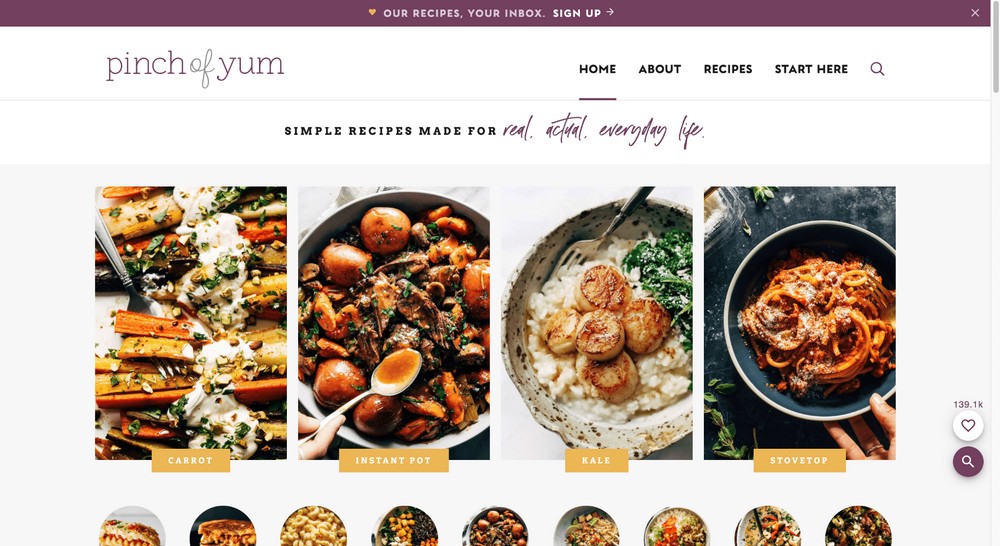
Pinch of Yum is a very successful food blog started by Lindsay and Bjork in April 2010. It started as a casual hobby and turned into a full-time business with millions of readers.
Lindsay shares tasty and healthy recipes on the blog.
The blog earned $21.97 in August 2011, and income steadily increased to over $90,000 a month. In November 2016, Pinch of Yum earned $95,197.34.
Most of the income came from ads and sponsored content, and the blog also earned revenue from partnering with Amazon and an eBook venture.
TiffyCooks – $45,000 – $55,000/month
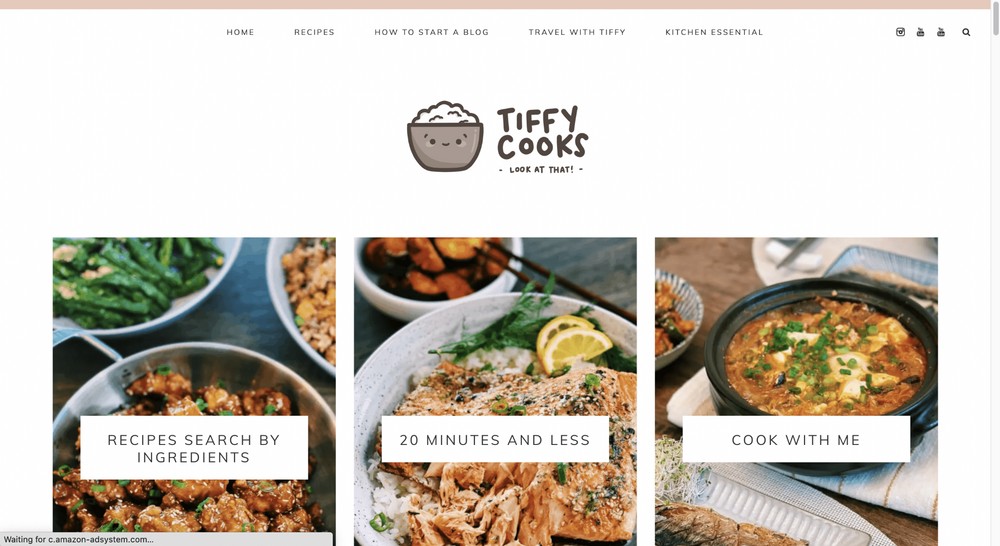
TiffyCooks is a food blog run by Tiffy, who was inspired by her love for food to start exploring and recreating Asian recipes after moving to Vancouver.
Tiffy switched from working full-time to being a full-time food blogger and her recipes range from primarily Asian to some Western dishes.
The blog includes a section for recipes that can be made in 20 minutes or less.
As of October 2021, Tiffy made $45,000 to $55,000 per month from the blog, with the majority of her income coming from website ads and deals with specific brands.
A Sassy Spoon – Over $7,000/month
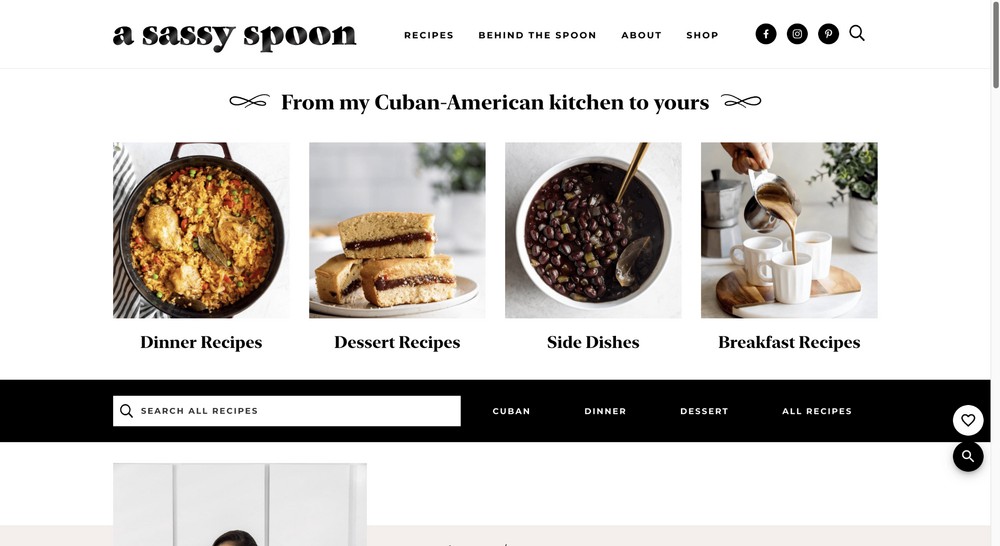
Jamie started the food blog A Sassy Spoon in early 2016 while working as a digital strategist in the culinary industry.
The blog features mostly classic Cuban recipes and some Latin-inspired food, with a focus on experimenting with decadent flavors.
Jamie invested in converting a corporate office into a kitchen, making the blog her full-time job.
In 2018, A Sassy Spoon earned $85,008.66, with the majority of the income coming from ads (52.7%), followed by freelance photography (24.7%), sponsored content (16.7%), and affiliate marketing and contributors’ content.
FAQs on how to start a cooking blog
Here are a few common questions we come across when writing about food blogs.
Over to you
Congratulations on making it to the end of this guide on how to start a food blog!
By now, you should have a clear understanding of the steps involved in getting your blog up and running, from choosing a platform and coming up with a catchy name, to finding your niche and creating delicious, visually appealing content.
Starting a food blog can be both a rewarding and fun project. It also requires dedication and hard work.
It’s imperative to consistently create and publish new content, engage with your audience, and stay up to date with the latest trends in the food industry.
With some patience and perseverance, your food blog can become a successful and fulfilling outlet for your passion for food and cooking.
So go ahead and get started on your food blog journey today! Whether you’re a seasoned chef or a beginner home cook, there’s a place for you in the world of food blogging. Happy writing!
Do you run a food blog? Just getting started? Have a story to share? You know what to do…
Disclosure: This blog may contain affiliate links. If you make a purchase through one of these links, we may receive a small commission. Read disclosure. Rest assured that we only recommend products that we have personally used and believe will add value to our readers. Thanks for your support!
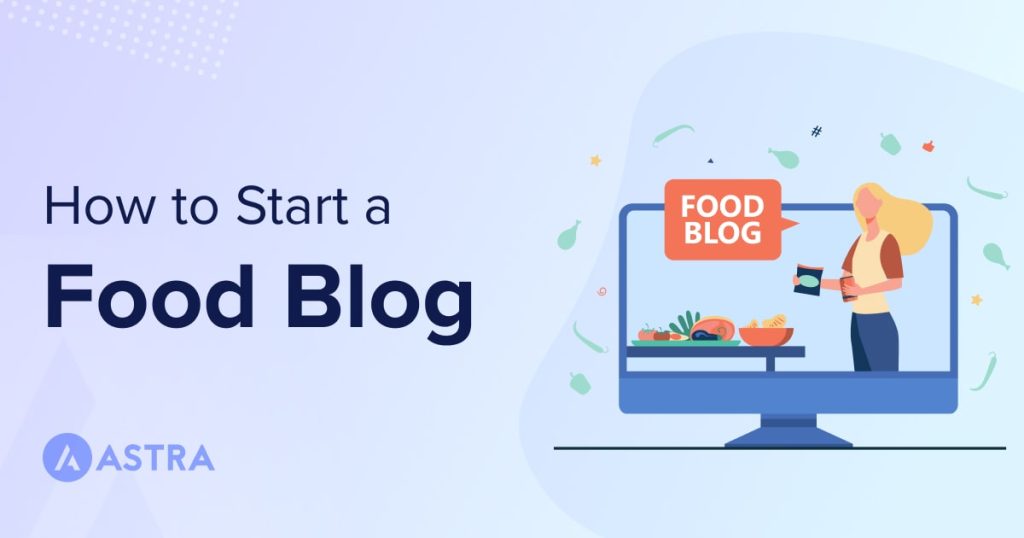

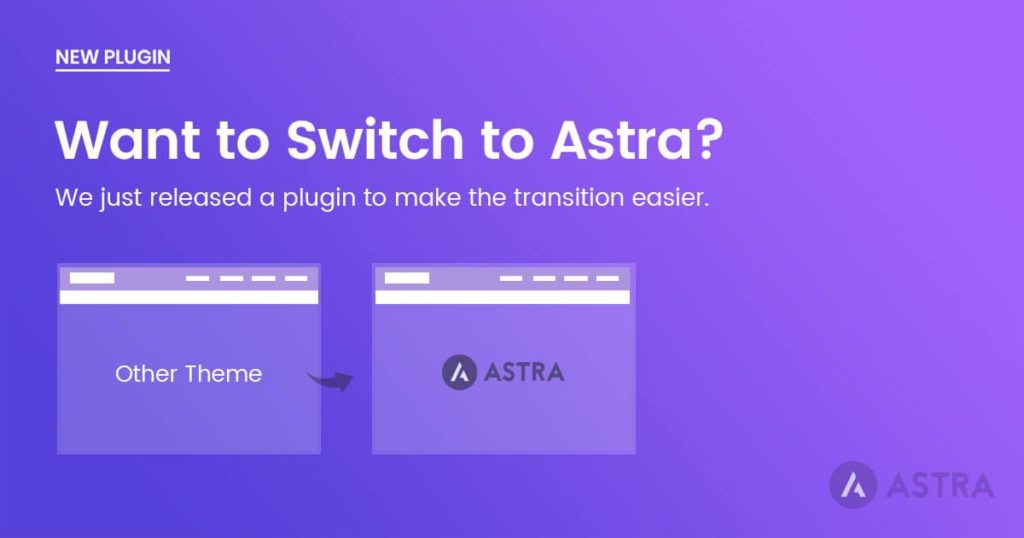



Your recent post concerning How to start a food blog with WordPress (step by step guide) is an absolute masterpiece! The way you’ve delved into the subject matter with such thoroughness and accuracy is truly praiseworthy. It’s clear that you’ve dedicated a substantial amount of time and diligence to creating this exceptional content. We’re grateful for your generosity in sharing your priceless knowledge, contributing to the advancement of our understanding!